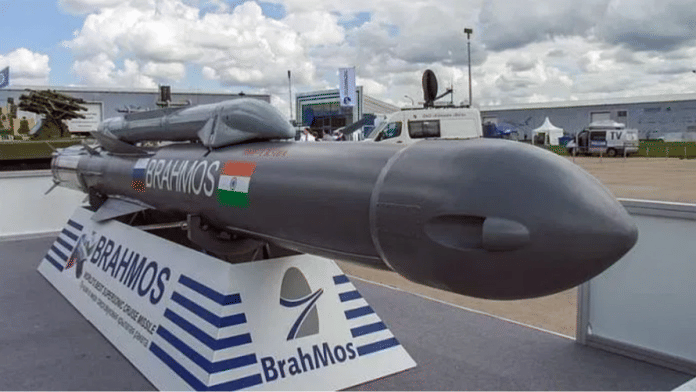Bengaluru: India and a foreign country are in final stages of negotiations for the sale of BrahMos supersonic missiles and a formal contract is expected to be signed later this year, ThePrint has learnt.
Sources in the defence and security establishment told ThePrint that besides this, India is also in talks with several other countries—the UAE, Saudi Arabia, Egypt, Vietnam and Indonesia, among others—for the sale of the missiles
ThePrint is withholding the name of the country that is likely to sign the contract due to sensitivity of the matter.
Asked about talks with Indonesia, sources said it was at the very initial stages and that there was still time before formal cost negotiations started.
On the sudden interest of Middle East countries in the land version of the BrahMos missiles, sources said the geopolitical situation has made several companies focus on neutral countries like India to source weapons from.
While India has the land, sea and air version of the BrahMos missiles, sources said discussions were on for the surface variant.
India last year started the delivery of the BrahMos to the Philippines, the first international customer of the missile.
The contract was for a shore-based variant of an anti-ship cruise missile, with a range of 290 km.
The BrahMos is the only supersonic cruise missile in the world that flies at three times the speed of sound. It is capable of both coastal defence and ground attack roles besides anti-ship. It is the product of a joint venture between India’s Defence Research and Development Organisation (DRDO) and Russia’s NPO Mashinostroyeniya in 1998. It is a portmanteau of the names of two rivers—India’s Brahmaputra and Russia’s Moskva.
India is working on a 1,500-km range version of the BrahMos system that can be launched from land, water or air. The current range of the existing BrahMos missiles in India’s arsenal has been increased to 450 and work is on to increase it further to 800 km.
The missile has a maximum speed of 2.8 Mach (around 3,450 kmph or 2,148 mph), and is difficult to intercept by surface-to-air missiles currently deployed from warships across the world. It also has an immense ability to evade various radars.
The missile’s cruising altitude could be up to 15 km, and the lowest it can fly is 10 metres above the surface. The missile is capable of carrying a conventional warhead (non-nuclear) weighing 200 to 300 kgs.
It is a two-stage missile, with a solid propellant booster engine that kicks in in the first stage and brings the missile to supersonic speed before separating.
Following this, the liquid ramjet comes into action, and takes the missile closer to Mach 3 in cruise phase. It operates on a “fire and forget” principle—it doesn’t have to be constantly monitored on its way to the target.
(Edited by Tikli Basu)
Also Read:Designed for assisting fighter aircraft, HAL CATS likely to take first flight by year end






